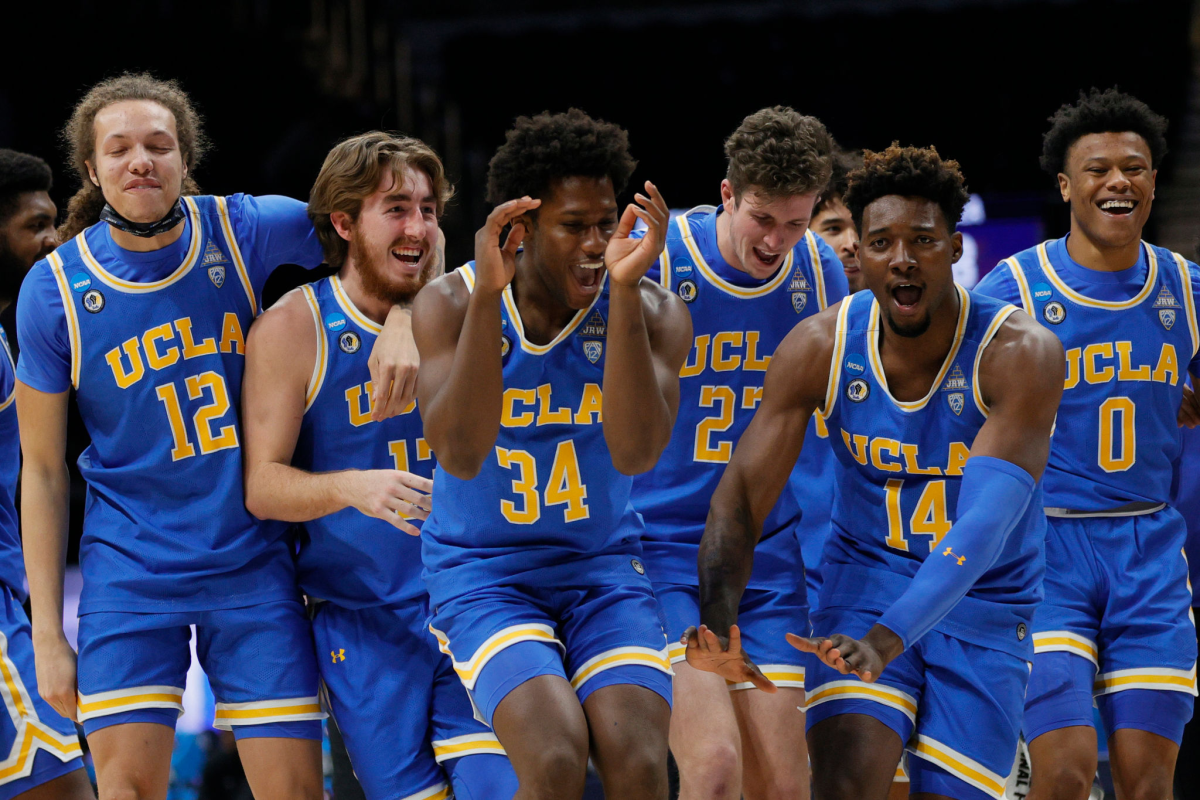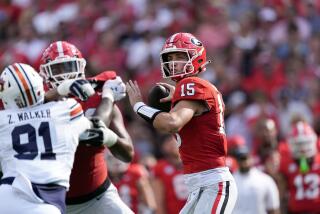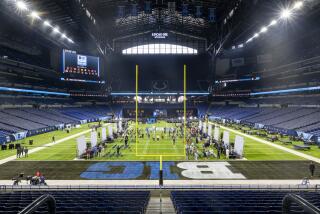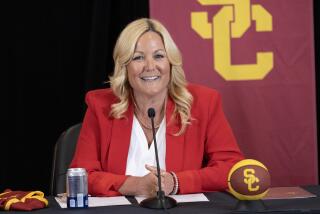Opinion: Student athletes deserve better from the NCAA. Thank goodness the Supreme Court agreed

The courts have been getting right up into the National Collegiate Athletic Assn.’s grill in recent years, causing some observers to wonder if it was just a matter of time before college athletes would be paid for their exploits on the field.
The U.S. Supreme Court just might have hastened that day. Contrary to the sentiments expressed by the high court in 1984, the justices unanimously agreed Monday that the NCAA has no special immunity from antitrust law.
The only issue in the case of NCAA vs. Alston was the NCAA’s ban on educational benefits beyond the so-called cost of attendance, which the court found unlawful. But Justice Brett M. Kavanaugh went further in a solo opinion, saying, “I add this concurring opinion to underscore that the NCAA’s remaining compensation rules also raise serious questions under the antitrust laws.”
Ruh-roh!
Imagine losing a game and asking for a rematch, only to suffer a worse defeat. That’s what happened here. The initial case, brought by a group of male and female basketball (and in the men’s case, football) players from big schools, challenged all the restrictions the NCAA and 11 conferences imposed on student athlete compensation. A federal district judge in Oakland found that most of the restrictions passed antitrust muster, but tossed out the limits on education-related aid, which barred schools from offering such things as free computers, extra tutoring or internships. Both sides appealed, and the 9th Circuit Court of Appeals upheld the lower court’s ruling.
The NCAA should have stopped there. Instead, it appealed the Alston ruling to the Supreme Court, which had previously said that the association should be given “ample latitude” by the courts to maintain the “revered tradition of amateurism in college sports.”
Except that these words weren’t binding; they were merely a dash of color tossed into the 1984 opinion by its author, Justice John Paul Stevens. Monday’s opinion, written by Justice Neil M. Gorsuch, made clear that the association gets no special dispensation. In order to avoid the hammer of antitrust law, Gorsuch wrote, the NCAA has to be able to demonstrate that the restraints it places on competition among its members have pro-competitive effects too. And those pro-competitive effects have to be greater than what could be achieved with less restrictive rules.
The lower courts held, and the justices agreed, that the NCAA hadn’t met that burden for the restrictions on educational benefits beyond the standard “full ride” scholarships that covered tuition, fees, housing, food and books. That aid, while enormously valuable, isn’t enough to make four years of college affordable to every student, leaving some still impoverished. The problem was worse before the NCAA raised the limits on educational aid in 2015; a 2011 study found that more than 80% of students with full athletic scholarships were left with incomes below the poverty line.
It would be naive to assume that Monday’s ruling will solve the problem of student athletes struggling to get by. Most likely, the schools with the most successful football and basketball programs will now have more aid to offer top recruits. Nevertheless, schools will no longer have an excuse for denying the young athletes they recruit the same opportunities away from the field that many non-athletes have.
The longer-term problem for the NCAA is that its definition of amateurism — which critics say looks like exploitation — appears to be losing its legal safe harbor. The courts and multiple state legislatures, including California’s, have already opened the door to student athletes earning money from their names, images and likenesses. Direct payments to those athletes may be next, although that’s not a sure thing.
The lower courts found in the Alston case that the NCAA met its burden when it came to justifying its rules against athletes being paid to play, accepting the association’s position that fewer people would attend or tune in to college sports if the distinction between professionals and collegiate amateurs were lost. That’s not a bad argument — if you completely discount the value of alumni loyalty, school rivalries and the intensity of college-level games.
The thing is, most college teams are money-losing operations. They’re subsidized by the most successful major-college football and basketball programs. And the only thing vaguely amateurish about those big football and basketball programs are the athletes in them. As Gorsuch noted in his opinion, the coaches, the conferences, the NCAA and its executives all make bank off of big-time college sports. “Revered tradition of amateurism,” indeed.
Kavanaugh noted several of the other traditions that have made college sports so popular, including the storied venues and tournaments. “But those traditions alone cannot justify the NCAA’s decision to build a massive money-raising enterprise on the backs of student athletes who are not fairly compensated,” he concluded. “Nowhere else in America can businesses get away with agreeing not to pay their workers a fair market rate on the theory that their product is defined by not paying their workers a fair market rate. And under ordinary principles of antitrust law, it is not evident why college sports should be any different. The NCAA is not above the law.”
The association had better hope Kavanaugh can’t find four colleagues to agree the next time some student athletes sue for the right to be paid a fraction of the billions of dollars they generate.
More to Read
A cure for the common opinion
Get thought-provoking perspectives with our weekly newsletter.
You may occasionally receive promotional content from the Los Angeles Times.











